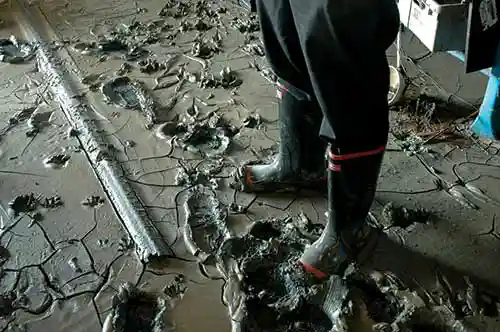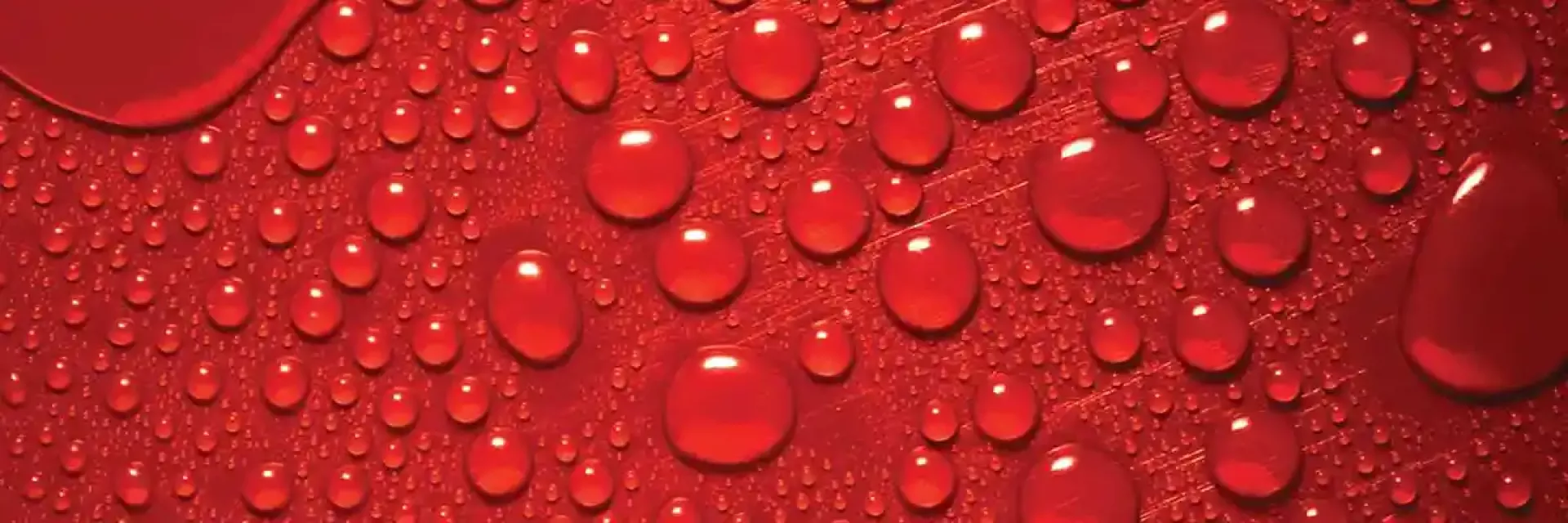Water Damage Cleanup and Repair
Water intrusion into buildings can be incredibly destructive. Over time, excess moisture can cause issues within an indoor environment. Without proper water extraction, decontamination, and drying, numerous long-term effects can take hold of a building and cause long-lasting structural damage as well as pose numerous health risks.
Should your home or business be affected, any type of water ingress should be taken seriously, and proper water damage restoration is a key part of recovery. This intervention should be prompt and effective, and it’s important to act within the first 24-48 hours to minimize the potential short and long-term effects of water damage.
Water Damage Mitigation
Whether it’s a burst pipe, flood damage, or any other number of potential causes, water damage needs speedy and effective water damage mitigation. Water mitigation is about much more than just drying and cleaning a property. There are many other factors to consider, like decontamination and treating porous materials (e.g. carpet or drywall) that can hold water. If left damp or untreated, bacteria can potentially thrive and cause future problems.
BELFOR has been restoring water-damaged properties for over 70 years, and we know the importance of a quick response and the successful implementation of a water restoration plan. Our water damage restoration process will evaluate three criteria to determine the best course of action:
- Amount of property damage
- Degree of contamination
- Replacement costs vs restoration costs
The time it takes to fully complete water restoration can vary based on several different factors. You can find out more about these in our Water Extraction and Drying and Flood Damage pages.
Water Damage Restoration and Repair
Water damage restoration must be carried out as quickly and efficiently as possible following any sort of water ingress. Put simply, water mitigation is lessening the impact of a disaster by reducing the potential damage caused by water after a leak or a flood.
The need for swift action comes down to the fact that standing water potentially becomes more contaminated the longer it’s left untreated. As water sits in place, the risk of microbial growth and damage to contents increases. As a result, water mitigation plays an important part of any water damage restoration plan.
Before experienced water restoration crews from BELFOR arrive and begin the water damage restoration process, there are steps you can take to reduce the risk of further damage.

Flood Water Cleanup
Water cleanup can refer to any kind of clean up after water enters, but it is particularly important following flooding and flood damage. Once flood waters have receded, you should enlist the help of a professional disaster recovery specialist such as BELFOR. Floods present many dangers that are not as common following an internal household leak or flood. For instance, flood waters can be highly contaminated and increase the risk of structural and electrical damage to property.
For every hour that goes by where there is a delay to cleanup services, the problem worsens and begins to rapidly deteriorate. However, no matter how severe a flood may seem, professional water cleanup can achieve amazing results that contribute to saving personal property, business assets and much more.
Water Damage FAQs
What is water damage?
Water damage is property damage caused by the intrusion of water. It can result in damage to various areas of the property, including walls, ceilings, floors, carpets, and furniture. Severe water damage can rot wood and result in mold growth, which can cause additional issues within the property.
Does homeowners insurance cover water damage?
Most homeowners insurance policies do help to cover water damage if the cause is sudden and accidental. The extent to which your insurance will help to cover water damage to your home depends on your policy. We will work with your insurance company to determine how much of the damage is covered under your policy.
How do you prevent mold after water damage has occurred?
To prevent mold growth after water damage, it is important to deal with the damage immediately and to ensure all water is properly extracted from the property and normal moisture levels are restored. As such, it is important to have water extraction and drying performed by professionals so that all water is removed, even from difficult-to-access areas like behind walls and under floorboards. Should mold growth occur, you can learn more about our mold remediation and removal process here.
What does water damage look like?
Water damage can present in various ways. Typical signs of water damage include peeling, bubbling, or cracking paint or wallpaper; small cracks and large spiderweb crack patterns can also appear on walls or ceilings. You may also see water rings, which are light brown in color. In wood floors, you may see warping and discoloration. Mold growth can also be a sign of water damage.
Can water damage be fixed?
Yes, water damage can typically be repaired. The extent of the repairs depends on the severity of the damage. If water damage goes unaddressed for an extended period of time, permanent damage can occur as certain materials (such as wood) can begin to break down. Therefore, the faster you act to fix water damage, the less likely it is to continue to spread and cause secondary damage.
How do you tell if water damage is new or old?
It can sometimes be difficult to determine if water damage is new or old, but there are some ways to tell. For example, if you notice a dark water damage spot on its own, it is likely newer. However, if there are water rings spread around the spot (on walls or ceilings, for example), the water damage has likely existed for a longer period of time. Either way, if you notice water damage in your property, it is important to act quickly to prevent the damage from spreading further.
Who should I call for water damage in my ceiling?
Here at BELFOR, our water extraction and drying professionals are able to effectively deal with water damage in all areas of your property, including ceilings, walls, floors, and any other areas where damage might have occurred.
How much does water damage repair cost?
The cost of water damage repair depends on factors such as the extent, severity, and location of the damage. Before performing any water removal or drying, we will provide you with a quote for your particular situation.
Should carpet be replaced after water damage?
While carpets that have suffered mild water damage can sometimes be salvaged, we recommend replacing severely water-damaged carpets. Oftentimes, the cost of trying to salvage a carpet can be more expensive than replacing water-damaged areas, and water-damaged carpets are hotbeds for mold growth and mildew, which can lead to harmful health effects.
How do you check for mold after water damage?
If your property has suffered water damage, you may notice mold beginning to grow in the affected area. Even if you do not see mold, it could be growing behind the walls or under the floors, so it is important to enlist professionals who know how to spot and where to look for mold. The most telltale sign of mold growth is smell. If you notice a musty smell or other strange odor in the impacted area, there’s a good chance mold has started to grow.
What should I do after water damage occurs?
If your property is suffering water damage, it is important to act quickly to limit the severity of the damage. If you have any furniture or personal items in the area that have not been damaged, you can try to move them to a safe location. However, we do not advise venturing into flood water as it can contain harmful chemicals or substances and can be electrically charged. Contact the professionals at BELFOR at the first sign of water damage to keep it from spreading.
What is category 3 water damage?
Water damage is categorized based on how clean or contaminated it is. There are three categories used to define the range of contamination based on source and quality. Category 3 water damage involves the most contaminated type of water. Here’s a summary of all three categories:
- Category 1 water comes from a clean or “sanitary” source, such as a broken water supply line, and does not pose a substantial risk to humans upon exposure.
- Category 2 water–sometimes called grey water–comes from sources like an overflowing dishwasher or toilet (urine only), and is “significantly” contaminated. It can contain potentially harmful microorganisms and chemical or biological matter.
- Category 3 water–also sometimes called black water–is “grossly contaminated” and comes from sources such as sewage backups and any form of natural flooding (rivers, oceans, groundwater). Category 3 water damage poses the most danger upon exposure because it can contain toxins, bacteria, and other pathogens that can cause severe illness or harm to humans.
Can water damage cause mold?
Yes, water damage frequently results in mold growth. The faster water damage is addressed, the less likely mold is to grow, so it is imperative to act quickly when your property suffers water damage.
How can I prevent water damage?
While it is not possible to prevent all water damage from occurring, there are steps you can take to protect your home, such as protecting against burst pipes and flooding. Steps you can take to prevent water damage include:
- Insulating pipes in your property
- Ensuring all drainage systems around the property are working effectively and not clogged
- Keeping gutters free of debris
- Having your roof inspected annually to check for leaks
- Making sure your sump pump is working properly
What is water damage restoration?
Water damage restoration refers to the process of removing and drying water from within a property, as well as the steps taken to repair any areas of the property that have been damaged by the water. Learn more about water damage restoration on our water damage services page.
Contact BELFOR For Water Extraction and Drying Recovery Services
To find out more about water damage and how BELFOR can help you recover your business or home as quickly as possible, head to our Water Extraction and Drying Recovery Services page.
Water damage is a serious threat to your property and, if left untreated, it can cause you, your home, or your business big problems. The good news is that water damage recovery and restoration is possible if you act quickly and seek help from a professional restoration team like BELFOR.
For more information on how water damage can affect your property and the steps you can take to protect your home, head to our Water Damage Repair and Flood Damage pages.
Water Extraction, Drying and Dehumidification Recovery Services


